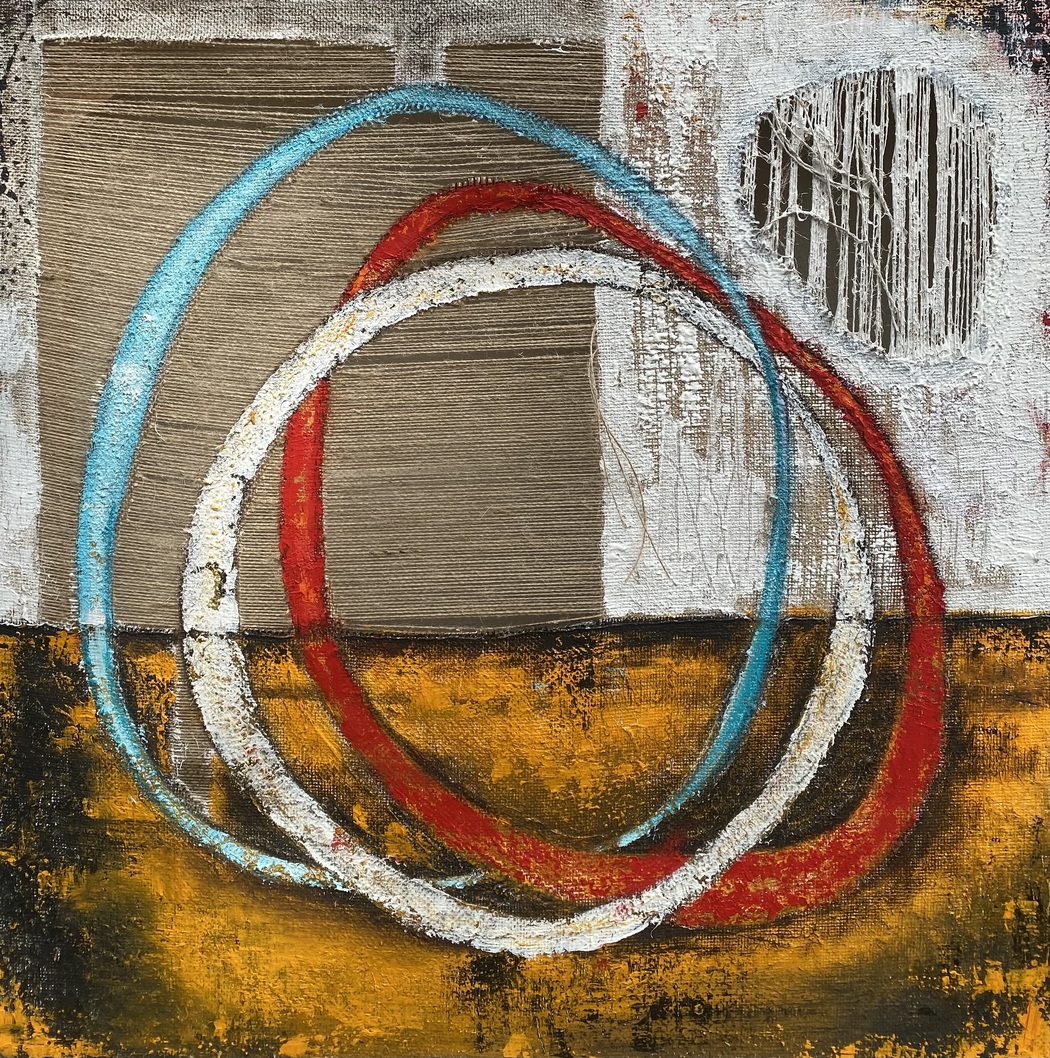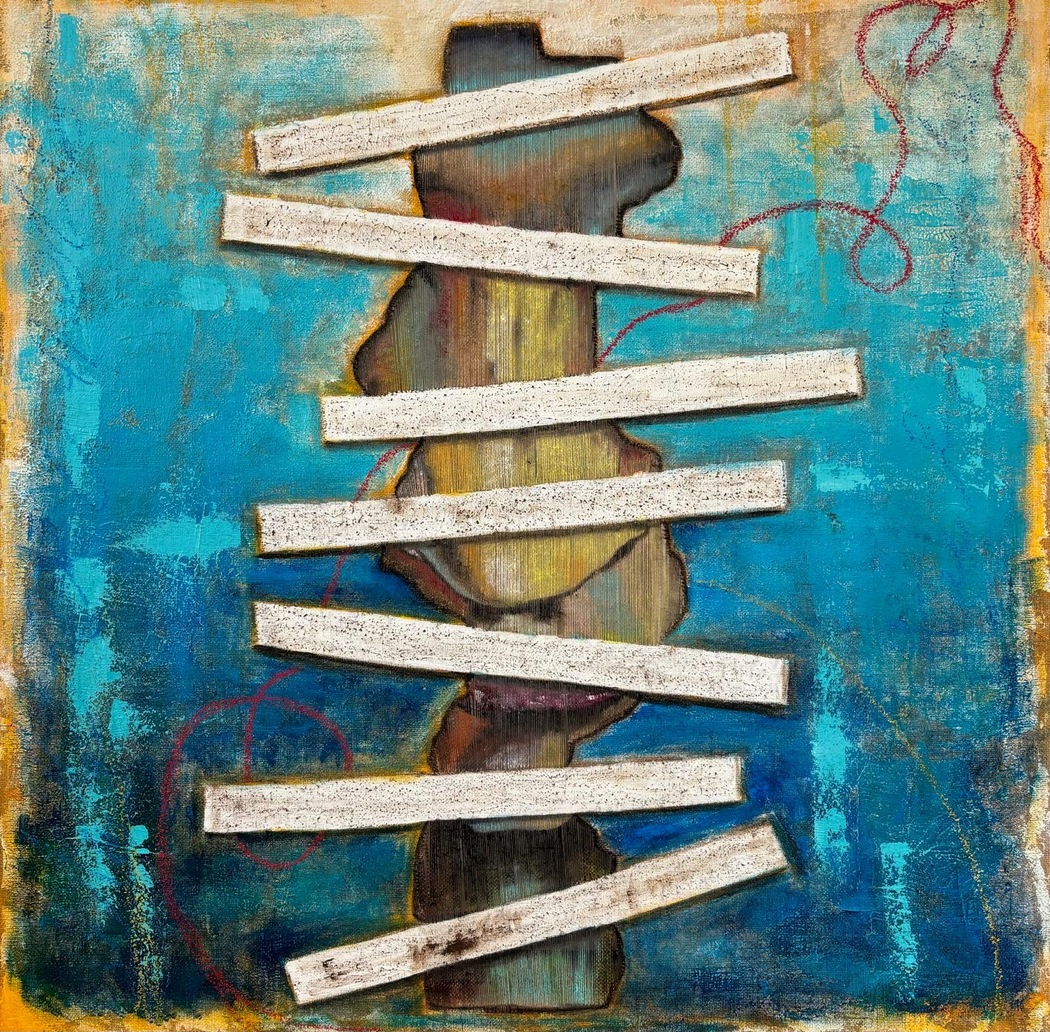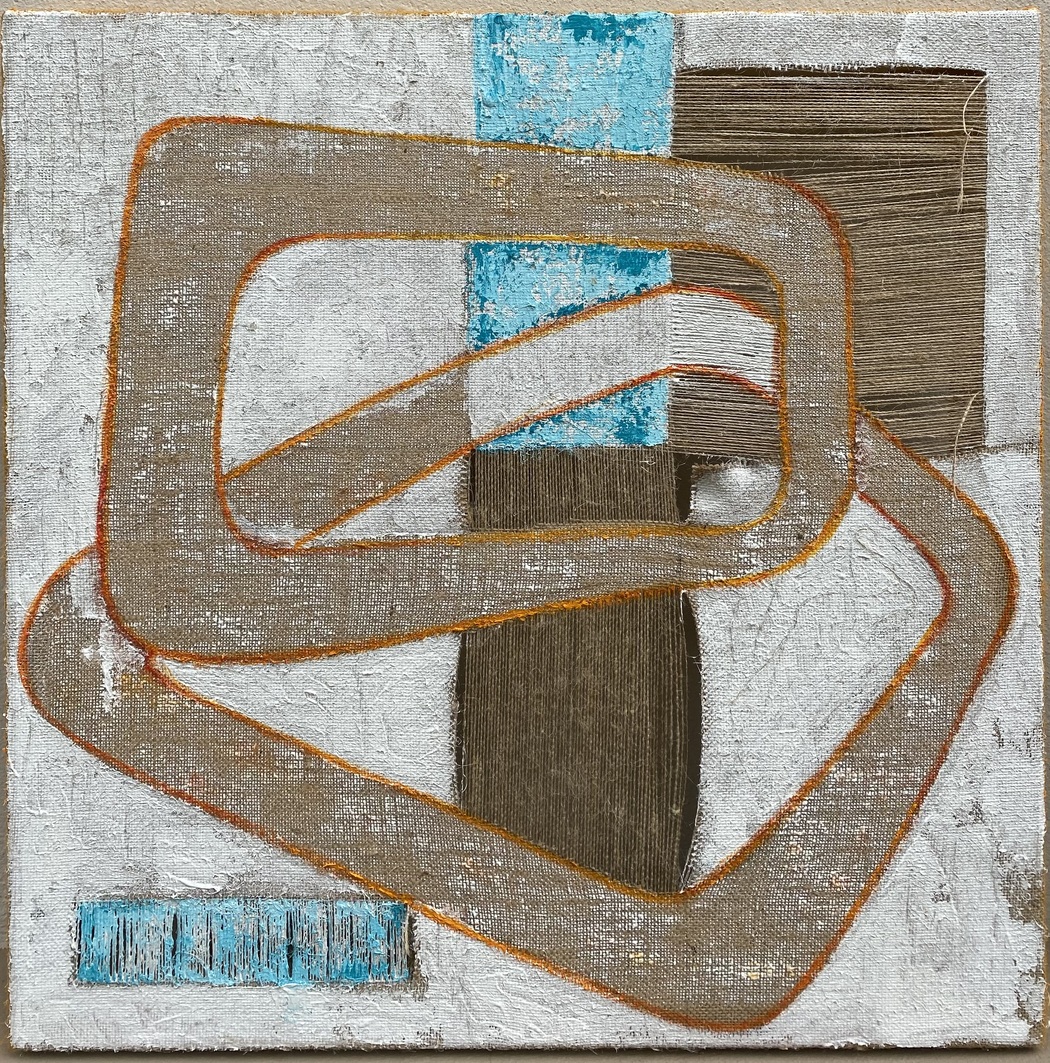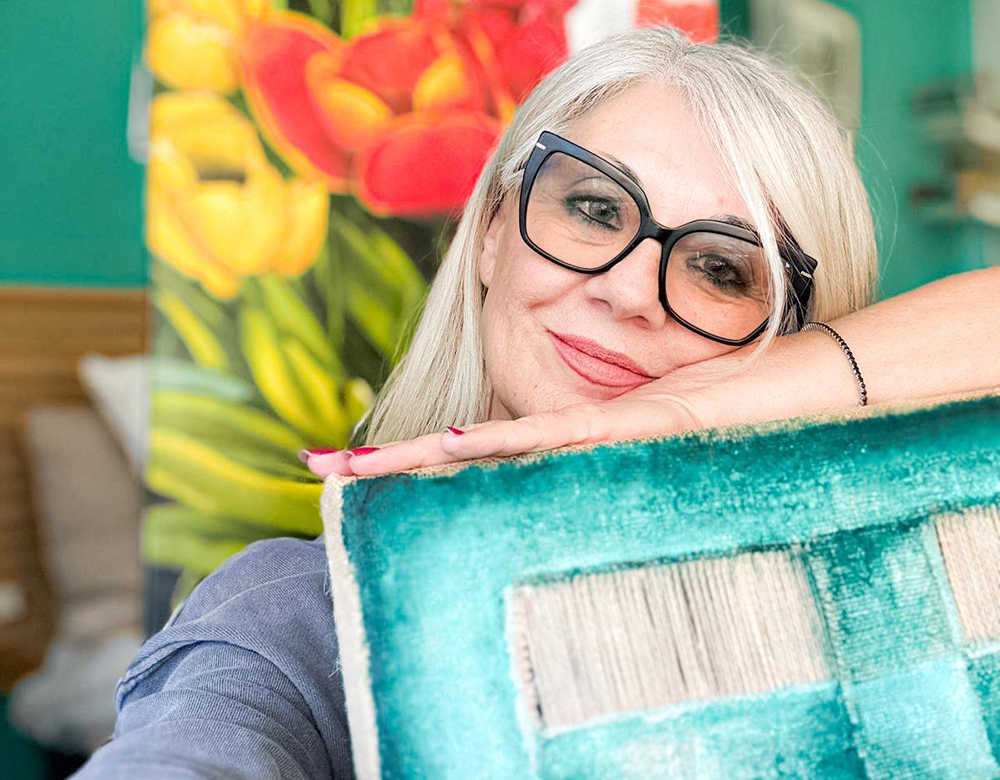Adelia de Padova
Year of birth: 1961.
Where you live: Varese.
Describe your art in three words: intense, textured, evocative.
Your discipline: oil colors on raw jute canvas.
Website | Instagram
Can you tell us about your artistic journey and how your father’s influence shaped your path?
I have always had a deep passion for art, a legacy I owe to my father, who was also a self-taught painter. As a child, I would watch him paint, fascinated by his ability to transform a blank canvas into something alive. This influence stayed with me, even when life took me elsewhere. After discontinuing a drawing course in 1992 due to family commitments, I only resumed painting years later, during the pandemic. It was a natural, almost necessary return that allowed me to rediscover my artistic identity.
Your technique of combining oil colors with jute canvas is quite unique. What led you to discover and develop this method?
Jute fascinated me with its texture and irregularity. I felt the need for a support that would give depth to my works, something that was not just a base but an integral part of the message. So, I began working on the fabric’s weave, unraveling parts of it to create a dialogue between emptiness and fullness, between what is seen and what is only suggested. Oil paint, with its intensity and richness, completes this expressive research.
 Adelia de Padova | Caos Contemporaneo | 2024
Adelia de Padova | Caos Contemporaneo | 2024
What role do the texture and rawness of jute canvas play in your artistic expression?
Jute carries a primitive strength, a kind of imperfection that I find extremely fascinating. Its rough texture allows me to work on multiple levels, creating contrasts between material and image. The idea of unraveling the canvas came from a desire to suggest a rupture, a tension between presence and absence, between the spoken and the unspoken.
Your works often evoke a sense of fragility and revelation. How do you hope your art resonates emotionally with viewers?
I am interested in exploring human vulnerability, that delicate balance between strength and fragility that we all carry within us. Through my works, I seek to create a silent dialogue with the viewer, inviting them to pause and look beyond appearances. I hope my art can evoke personal emotions, triggering intimate reflections that vary depending on the viewer’s experience.
 Adelia de Padova | Invisibili | 2024
Adelia de Padova | Invisibili | 2024
How did the pandemic influence your return to oil painting, and what changes did it bring to your artistic practice?
During the pandemic, I felt the need to express myself in a deeper and more authentic way. It was a moment of forced introspection that led me to rediscover the pleasure of oil painting. Since then, my approach has become freer, more experimental, and more focused on personal exploration.
You have explored various courses and artistic techniques. How do you balance learning and experimentation while staying true to your artistic voice?
Every new technique I learn is a piece that enriches my artistic language without ever altering it. I love exploring and testing different materials, but in the end, I always return to what feels most authentic to me. It is a balance between openness and identity: learning from others helps me grow, but my vision remains the common thread.
 Adelia de Padova | Oltre | 2024
Adelia de Padova | Oltre | 2024
What challenges do you face as an artist experimenting with innovative techniques, and how do you overcome them?
One of the main challenges is making my technique understood, especially when it involves an unconventional approach like unraveling jute. Sometimes there is resistance from the audience or from those who view art through a more traditional lens. My response is perseverance: I keep working, exhibiting, and explaining my process, allowing time to give value to my research.


Leave a Reply